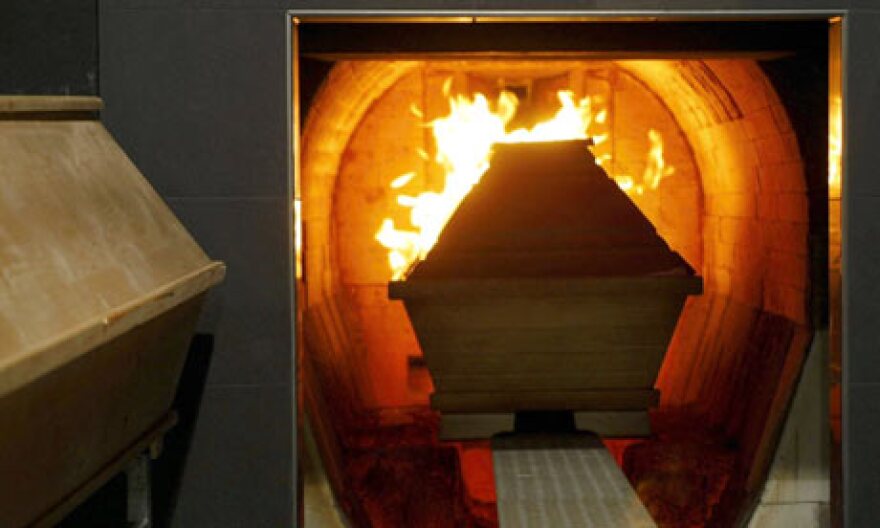Traditionally, burial has long been the preferred final rite in Kenya, but cremation is gradually gaining acceptance. Influenced by various factors—such as limited land, religious preferences, and the high costs associated with burials—cremation is emerging as a practical alternative, particularly in urban areas like Nairobi. However, it remains a topic wrapped in cultural sensitivities, and the decision often depends on a blend of economic, spiritual, and social considerations.
This guide explores everything you need to know about cremation in Kenya, including the step-by-step process, associated costs, religious views, and a few notable Kenyans who have opted for this choice.
Understanding Cremation
Cremation is the process of reducing a body to ashes by exposing it to intense heat in a specialized furnace called a cremation chamber or retort. Most crematoriums require the body to be placed in a container, which can range from a simple cardboard box to a cremation casket.
The Cremation Process in Kenya: Step-by-Step
- Booking the Crematorium: After a booking is made, attendants ensure the crematorium is properly cleaned and prepared for the ceremony.
- Fuel Preparation: For electric kilns, sufficient diesel is stored. Firewood is stocked for traditional cremation methods.
- Prayer Session: A short prayer session is held before the body is transferred to a trolley and taken to the cremation chamber.
- Family Participation Options: Families can choose between a closed kiln, where the process is private, or an open kiln where family members may witness the cremation. Some may opt to light the fire themselves as a symbolic gesture.
- Cremation Process: The body is placed in the chamber, where it requires about 40 liters of diesel and temperatures reaching 1,000-2,000 degrees Celsius. Cremation usually takes between 1.5 and 2 hours.
- Ash Collection: Families can receive the ashes the same day or pick them up later. Uncollected ashes are sometimes dispersed in the crematorium grounds.
Costs of Cremation in Kenya
The cost of cremation in Kenya varies by location, facility, and services chosen. Below are approximate prices for prominent crematoriums in Nairobi:
- Lang’ata Crematorium: Ksh16,800 for adults and Ksh12,000 for children.
- Kariokor and Hindu Crematoriums: Ksh10,000 for Hindu members and Ksh22,500 for non-Hindus.
Prices range from Ksh20,000 to Ksh100,000 based on facility and services, including open versus closed kilns, choice of fuel, and additional ceremonial needs. Cremation costs can be considerably lower than the costs associated with traditional burials, especially with the high price of land and burial plots in urban areas.
Prominent Kenyans Who Were Cremated
Several notable Kenyans have opted for cremation, a choice that often surprised the public, given traditional expectations. Among them are:
- Bob Collymore: The former CEO of Safaricom, cremated at Kariokor Crematorium in a private ceremony attended by close friends and family.
- Wangari Maathai: The Nobel laureate was cremated, and her ashes were interred at the Wangari Maathai Institute for Peace and Environmental Studies.
- Kenneth Matiba: A veteran politician and multiparty democracy advocate, who chose cremation in April 2018.
- Jeremiah Kiereini: The former chief secretary and prominent businessman opted for cremation upon his death.
- Manasses Kuria and his wife, Mary: The Anglican Archbishop and his wife were both cremated at Lang’ata Crematorium.
Religious Perspectives on Cremation in Kenya
Kenya’s religious landscape largely influences attitudes toward cremation. Hinduism mandates cremation as a ritual of passage, while Islam traditionally prescribes burial. Christianity varies, with some denominations, especially the Catholic Church, historically opposing cremation but gradually accepting it over recent decades.
- Hinduism: Strongly endorses cremation, seeing it as a purification ritual that aids the soul’s journey.
- Islam: Generally forbids cremation, viewing burial as the most respectful way to honor the deceased.
- Christianity: Acceptance varies, with the Catholic Church now allowing cremation under certain guidelines, while Orthodox Christians and many Conservative Protestants still prefer burial.
History of Cremation: A Global Context
Cremation has deep roots, dating back to 8,000 B.C. in ancient China, but its global acceptance has fluctuated. In Europe, cremation was common in the Roman Empire until Christianity’s rise, which shifted practices toward burial. The reintroduction of cremation in the 19th century, led by technological advancements in crematorium design, sparked public health debates that ultimately popularized it across Europe and beyond. Today, cremation rates range widely globally, from low percentages in African nations to over 75% in countries like Switzerland.
Choosing Between Cremation and Burial in Kenya
Ultimately, the choice between cremation and burial remains highly personal, shaped by the deceased’s wishes, family preferences, religious beliefs, and financial considerations. In urban centers like Nairobi, where burial costs are high, cremation offers a more economical and sustainable alternative. In rural areas, where land for burials is more accessible and traditions stronger, burial remains the dominant choice.
By understanding the cremation process, costs, and religious perspectives, Kenyans have a more informed basis for making this final, deeply personal decision. Whether families choose cremation or burial, both offer ways to honor a life’s memory respectfully and meaningfully in alignment with their values and cultural beliefs.





